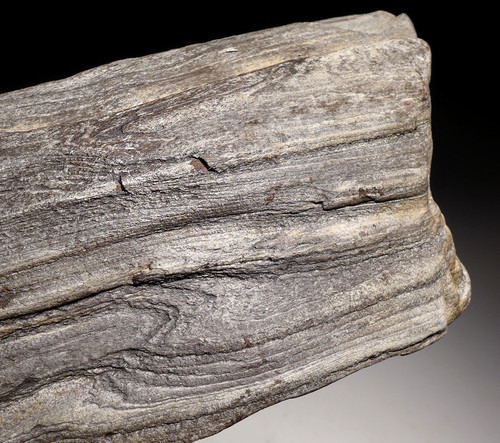Product Description
CLICK HERE TO SEE MORE PLANT FOSSILS
Petrified wood in its natural form is MUCH LESS prevalent on the market compared to sliced and polished examples. Unfortunately, when such modifications are done to the specimen, the fossil value of the wood is lessened and the piece becomes more of a pretty mineral showpiece rather than an educational and intriguing display fossil because the natural interior and exterior appearance has been modified or in some cases, destroyed.
This is a large portion of a split log from a tree that once lived in the Miocene Period in the Czech Republic. The species is not known. There are very rare features that are not seen in your typical petrified wood. For collectors of fossil plants and petrified wood collectors, this is an extremely rare and unusual specimen with incredible natural life-like detail. This piece was dug so it had not been yet exposed to the elements of modern time thereby retaining its splendid detail. This is an immensely attractive fossil wood specimen and highly recommended either as a stand-alone accent piece or as an addition to a fossil wood collection to show the varying forms of petrified wood.
The Megalodon shark was terrorizing the seas during the time this fossil was a living tree.
HISTORY
Petrified wood forms when real wood lies buried underground and its organic structure is gradually replaced with hard mineral. This petrification requires rapid burial of the wood to prevent normal decay. This can happen in different ways. A flooding river can have bury the forest floor under a layer of sand and silt, for example. Another circumstance could occur when forests are covered by volcanic ash. After burial, mineralized groundwater begins to percolate through the wood, coating cell walls and filling the intercellular cavities with stone. In some cases, the entire log is converted to stone and is solid like a cast of the original piece. In other cases, the delicate cellular structures are preserved along with growth rings, bark and knots such that the petrified wood exactly resembles modern wood yet is heavy as stone when held, and clinks like porcelain. Such detailed preservation is possible because the organic wood molecules become coated and surrounded with smaller silica molecules. Small amounts of impurities in the mineralized water add color to the fossilized wood. The hues of yellow, brown and red indicate iron while black and purple are derived from carbon or manganese.
 US DOLLAR
US DOLLAR
 EURO
EURO
 AUSTRALIAN DOLLAR
AUSTRALIAN DOLLAR
 CANADIAN DOLLAR
CANADIAN DOLLAR
 POUND STERLING
POUND STERLING
























